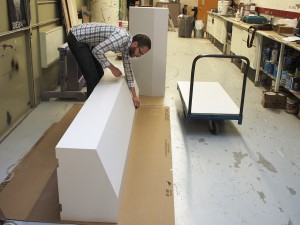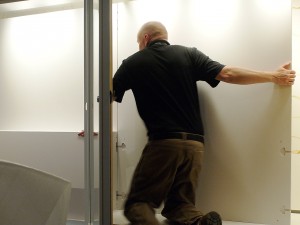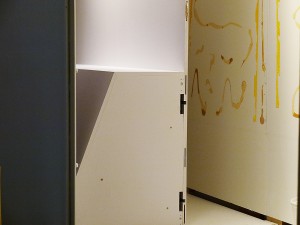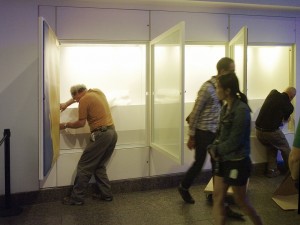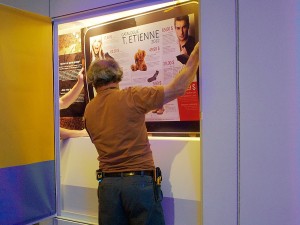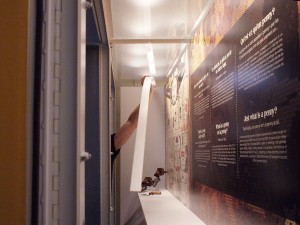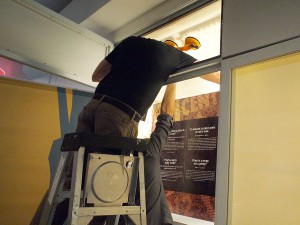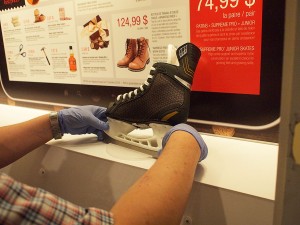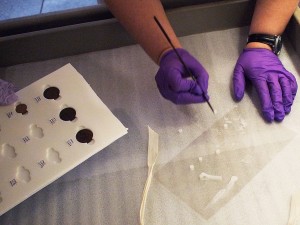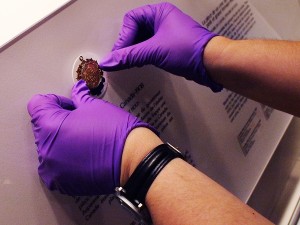Measure nine times, cut once
The entire exhibition, minus the artifacts, is waiting to be installed at the Canadian Museum of History.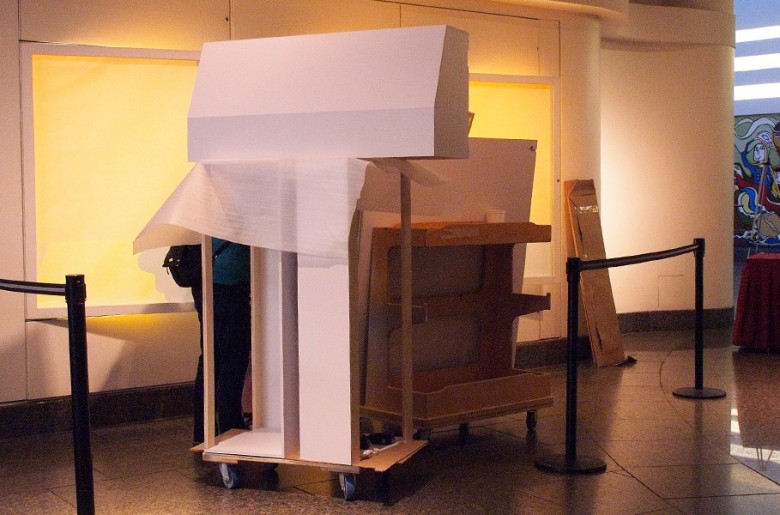
There have been stories of beautifully crafted, intelligently designed exhibition components whose designer failed to take into consideration some trivial matter; things like the ceiling of the freight elevator being six inches lower than the museum entrance and therefore four inches lower than the component. Situations like this cause exhibition planners, designers and installers to go prematurely grey. To keep their hair youthfully dark, exhibit fabricators are extra careful to measure and re-measure not only the space the exhibit occupies, but all of the entrances, hallways and elevators the components must pass through. It’s all about avoiding the nasty surprises.
You could work in the exhibition-fabrication business all your life and still run into things you wouldn’t expect: a never-ending series of “uh-ohs.” It’s one of the things that makes the job so interesting and demands a high level of creative problem‑solving skills - and at the installation end, lots of glue, tape and sharp knives. With the installation of our latest temporary exhibition, CENTimental Journey, at the Canadian Museum of History, there were a few surprises. But thankfully, none were of the nasty variety.
The first stop for the exhibit components was the museum workshop where the installer took final measurements to make sure everything would fit into the display case. The eight separate components needed to be inserted end-wise into the case and then assembled inside. Since the case had no back door and the units attach to each other from behind, once installation began, there was a fair amount of grunting, colourful language and amateur acrobatics involved in the assembly.
Uh-oh #1: Now that the unit is assembled, how do we slide it forward to meet the edge of the case?
Solution: Suction cups.
The info panels were printed on light foam core with a few inches of background area framing the images. The panels were easily stuck in place with double-sided tape.
Uh-oh #2: The panels are too big.
Solution: Trim them - they’re deliberately printed with wide borders.
Next on the agenda: prop placement. This called for placing rolls of pennies representing inflationary values for both the 1912 and the 2012 scenarios. The latter display required over 120 rolls that needed to be stacked in pyramids.
Uh-oh #3: The rolls of pennies won’t stay put.
Solution: Stick them down with double-sided tape and hot glue.
Now it was time to deal with the lights. Inevitably when you adjust track lights, dust will fall and for every shadow that is eliminated, an unwanted highlight appears someplace else. The light never seems as even as it might be and you could spend the rest of the day messing around up there burning your pinkies on flaming-hot halogen fixtures.
Uh-oh #4: The internal lighting is uneven.
Solution: Put another sheet of diffusion material in front of the bulbs.
Uh-oh #5: You can see part of the back of the case through the light-diffusion panel.
Solution: Lay a long strip of plastic along the back edge of the panel (this one took some time to figure out).
It takes a bit of hot glue and tape to keep 12,599 pennies in place.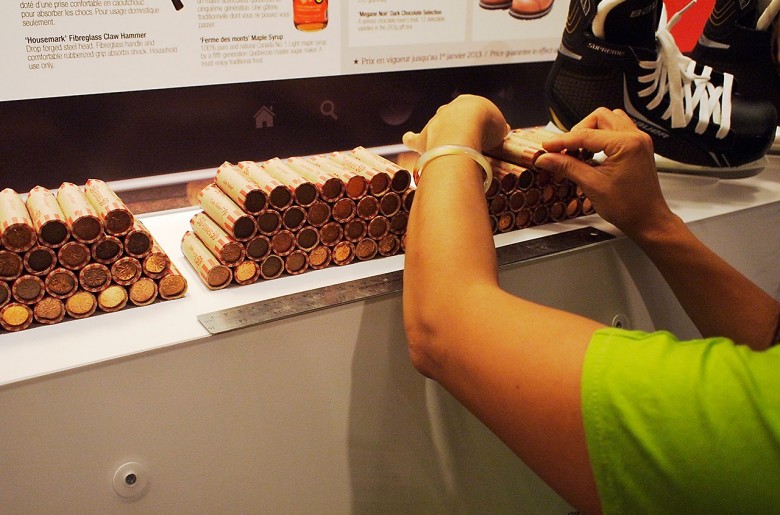
Lights adjusted? Panels secure? Props in place? OK. With help from a CMH conservator and the installation technician, our conservator began what turned out to be a remarkably quick task: placing the coins in the case. The coins are displayed in shallow holes drilled in the acrylic panels - each hole a millimetre bigger than the circumference of the coin. This allowed for a little shifting about and the coins were actually held in place with a dab of conservator’s wax and not by the edges of the opening. This worked flawlessly.
No more Uh-ohs.
The installation cart: cleaners, wipes, tools, wire, fishing line and all things sticky for any unexpected uh-ohs.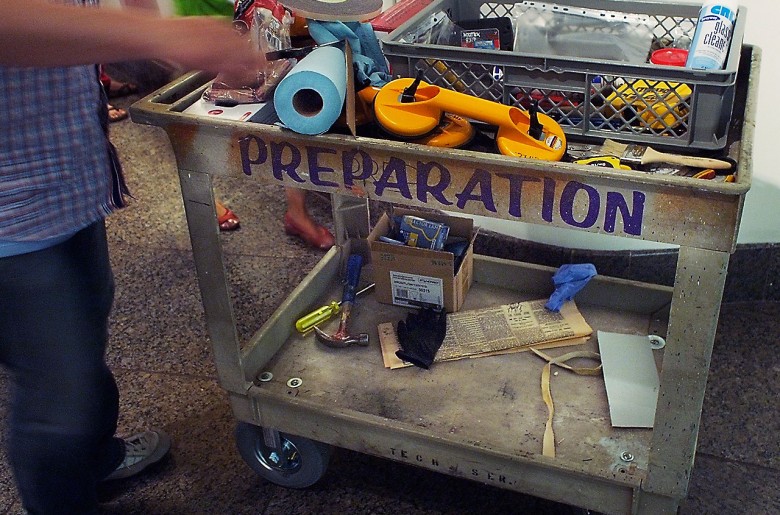
Please drop by the Canadian Museum of History and see CENTimental Journey; downstairs, past the Canadian Stamp Collection. The show closes 26 June 2015.
The Museum Blog
Whatever happened to the penny? A history of our one-cent coin.
By: Graham Iddon
Good as gold? A simple explanation of the gold standard
By: Graham Iddon
Speculating on the piggy bank
By: Graham Iddon
New acquisitions—2024 edition
Money’s metaphors
Treaties, money and art
Rai: big money
By: Graham Iddon
Lessons from the Great Depression
By: Graham Iddon
Welcoming Newfoundland to Canada
By: David Bergeron
New Acquisitions—2023 Edition
Mo’ money, mo’ questions
Understanding cryptocurrencies
By: Graham Iddon
